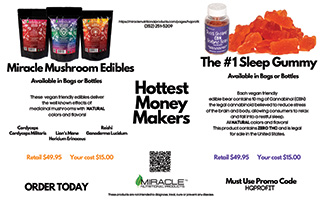As successful retailers know, happy customers are made with good customer service. But what happens after your customer walks out the door? Will they still be happy when they get home and go to use their newly purchased products? That’s where customer success comes into play, and it’s just as important, if not more so, in building repeat business. The main similarities between the two roles are that they both include aiding customers, not only in person, but using resources like email, chat, or the phone, and sharing knowledge to ensure customer happiness.
While both have the same goal—to aid the customer—customer success is a particular kind of customer service that entails product education, feedback, and problem-solving.
Your customer success members should be experts in your product lines. They should be capable of diverse and proactive support, while maintaining the patience and people skills to deal with frustrated customers whose difficulties or questions are affecting their satisfaction with using the products. Unlike customer support, which starts when the customer reaches out with a problem, customer success is a proactive strategy to keep showing the customer that your products are valuable. A customer success member is someone who is devoted to pleasing customers from start to finish. Whether working for a retailer or a vendor, they want to make sure that after a customer makes a purchase or places an order, and then experiences the product, they want to leave a glowing, five-star review about their great experience. That means a customer success member must make sure that all the elements of the sale go well.
Have you ever gone out to eat and were overwhelmed by the menu and what you really want is someone to help you decide? That’s one way to look at the role of customer success. Like a good waiter, the person in charge of customer success looks at the picture in its entirety; what will provide immediate gratification as well as long term stability. Just like the waiter who comes around to make sure you’re enjoying your meal, success members accompany the customer on their journey and stick around for the entire lifecycle.
Having earned the customer’s trust, success members can also generate excitement for new products. As new products come into the catalog or onto the shelf, they arrange demos and training. They can also find upsell opportunities organically because they’ve taken the time to understand their customer’s likes, needs and wants.
By knowing products inside-out, hopefully having tested the products themselves, customer success members are also able to provide the support and training necessary to keep their customers happy. This knowledge is also important when onboarding new staff who will be the first contact with new customers. However, with all the products on the market, it’s challenging to know everything about everything, so customer success sometimes means admitting that you aren’t sure, and understanding that every question is important to the person asking it, will do everything possible to find the answer.
At the heart of it, a customer success program is meant to create better and more meaningful relationships with your existing customers, instead of acquiring new ones.
No small business can afford to take customer relationships for granted, and the best way to do that is to build them right into your sales and marketing plans. You have a 60-70% chance of getting business from your existing customers compared to only a 5-20% chance of selling to somebody new. So it’s easy to see how excellent customer service with a focus on customer success gives you an effective way to stand out from competition who might be more interested in simply making a quick buck.
It’s not enough anymore to have great products (again retailers or vendors take heed). To earn brand loyalty, you need to offer personal, ongoing relationships and a fantastic customer experience. Only when sales teams work together can they provide the kind of successful experience that keeps customers coming back for more.












